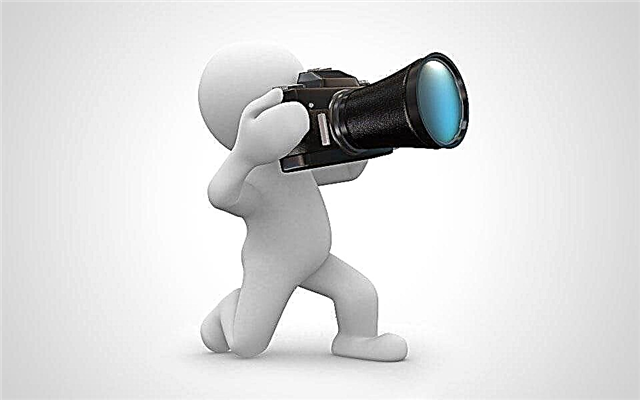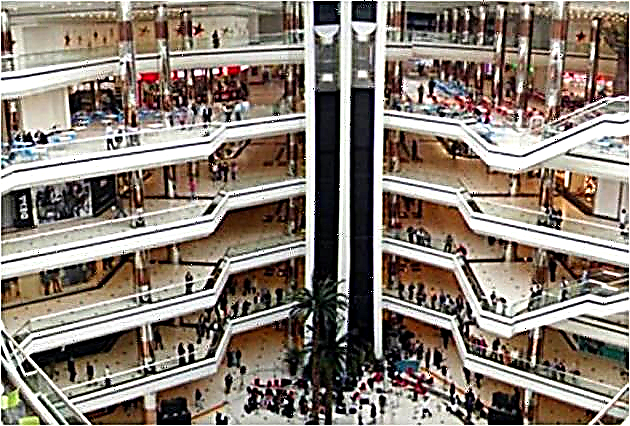Most psychologists believe that color affects how we perceive certain situations. According to some researchers, our brain inherently combines colors with feelings, while others believe that a person eventually associates a feeling with a certain color. Here are ten interesting facts about how color can affect the human brain.
10. Red
 Red traditionally associated with danger, but its impact is not limited to this.
Red traditionally associated with danger, but its impact is not limited to this.
- A study in 2012 showed that waitresses who wore a red uniform received 14.6-26.1% more tips from men compared to those wearing a different color. The reason for this is because red enhances female sex appeal. So the ladies who are going on a date and want to look more attractive need to add more red elements to their outfit.
- If you are engaged in auction sales (for example on eBay), then photograph the item that you are going to sell on a red background. Researchers at the University of Chicago found that consumers bargained more aggressively for objects that had a red background.
- On the other hand, if you are not going to place your product at auction and put it out according to the “Buy Now” option, avoid red at all costs. Consumers are less likely to buy objects (without bidding) for which the background is red.
9. Orange
 This color is not associated with a specific feeling, but can affect us in many ways.
This color is not associated with a specific feeling, but can affect us in many ways.
- Firstly, orange color is associated with heat. If the room is colored orange, people believe that the temperature in it is higher than it actually is.
- Secondly, orange is associated with good quality. Stores with orange logos, such as Home Depot, are seen as places where you can buy high-quality goods at low cost.
- Thirdly, like red, orange is associated with danger, although in the case of orange, it is not immediate.
8. Yellow
 Yellow is associated with a sense of joy, optimism, openness and friendliness. And the emotion that occurs in many people looking at the yellow color is happiness.
Yellow is associated with a sense of joy, optimism, openness and friendliness. And the emotion that occurs in many people looking at the yellow color is happiness.
7. Green
 Psychologists have established that green can be associated with highly developed thinking, relaxation, inner focus, and personal or professional growth. Thus, researchers recommend staining the workspace green to increase productivity.
Psychologists have established that green can be associated with highly developed thinking, relaxation, inner focus, and personal or professional growth. Thus, researchers recommend staining the workspace green to increase productivity.
6. Blue
 This is the opposite of red and the second most studied color (after red, of course).
This is the opposite of red and the second most studied color (after red, of course).
- Blue is the color of calm and concentration..
- In addition, he can lower blood pressure, and this could explain why we feel more relaxed with nurses and doctors dressed in blue robes.
- Blue is also associated with openness and peacefulness.
5. Blue
 Its effects are similar to blue, it calms the nerves and at the same time leads to unexpected effects on our brain and body.
Its effects are similar to blue, it calms the nerves and at the same time leads to unexpected effects on our brain and body.
- For example, detected correlation between blue and clarity of thought. This correlation was used in Japan in Nara Prefecture, where blue streetlights were installed on some streets and popular railway stations in the hope of preventing crime and reducing the number of suicides. And it seems that it worked, because at those stations where the blue lights were installed, there were no suicide attempts, and the number of crimes in blue-lit areas decreased by nine percent.
- There are numerous studies comparing the contrasting effects of blue and red. One study showed that being in a blue colored environment allowed subjects to find twice as many creative solutions to the problem compared to when they were in a red dominant environment. On the other hand, red allows you to increase productivity when solving domain-specific tasks (for example, retrieving memories).
4. Violet
 This strange and little-studied color is a mixture of blue and red, that is, two contrasting tones in terms of influencing the minds of people.
This strange and little-studied color is a mixture of blue and red, that is, two contrasting tones in terms of influencing the minds of people.
- One study found that the purple room seems colder than it actually is.
- Since there is a shortage of scientific articles on the effect of the purple “color,” here's an interesting fact for you: women often include purple on their favorite color list, while men often rank him as unloved.
3. Pink
 Can such a delicate “girlish” color affect the human mind? It turns out, maybe. Researchers have discovered behavioral changes in people placed in so-called "pink prisons."
Can such a delicate “girlish” color affect the human mind? It turns out, maybe. Researchers have discovered behavioral changes in people placed in so-called "pink prisons."
- A study in 1979 showed that prisoners placed in bright pink cells immediately became less aggressiveand their muscles relaxed. Their sense of anxiety and frustration also diminished significantly.
- Today, 20% of prisons in Switzerland have at least one pink cell reserved for obstinate prisoners.
- And the children, who spent only ten minutes in the pink room, stopped screaming and indulging. However, most children even fell asleep during that period of time. So staining the nursery in pink, perhaps, will make the lives of parents more relaxed.
2. White
 White is associated with a lack of aggression., innocence and purity. A 2010 study showed that men wearing a plain white T-shirt were perceived by women as more attractive.
White is associated with a lack of aggression., innocence and purity. A 2010 study showed that men wearing a plain white T-shirt were perceived by women as more attractive.
However, this is a rather boring color. Monochromatic white space reduces attention spans compared to more colorful areas and makes us leave our thoughts to ourselves, forgetting about the environment.
1. Black
 The first place in the power of the influence of the color palette on children and adults is occupied by the color, which is especially loved by teenage rebels and insecure people. Black is actually a lack of color. Children are afraid of black, but adults use it in their clothes to appear slimmer.
The first place in the power of the influence of the color palette on children and adults is occupied by the color, which is especially loved by teenage rebels and insecure people. Black is actually a lack of color. Children are afraid of black, but adults use it in their clothes to appear slimmer.
- Black clothing enhances feminine appeal and it seems more fashionable.
- And the most interesting effect of black is that it can make a person more aggressive. We tend to associate black with death and evil, and in this regard, researchers in 1988 came to the conclusion that people tend to become aggressive in the environment of black objects.
- In addition, it was found that people are likely to pay more for products that are advertised with an abundance of black tones (for example, on a billboard).












